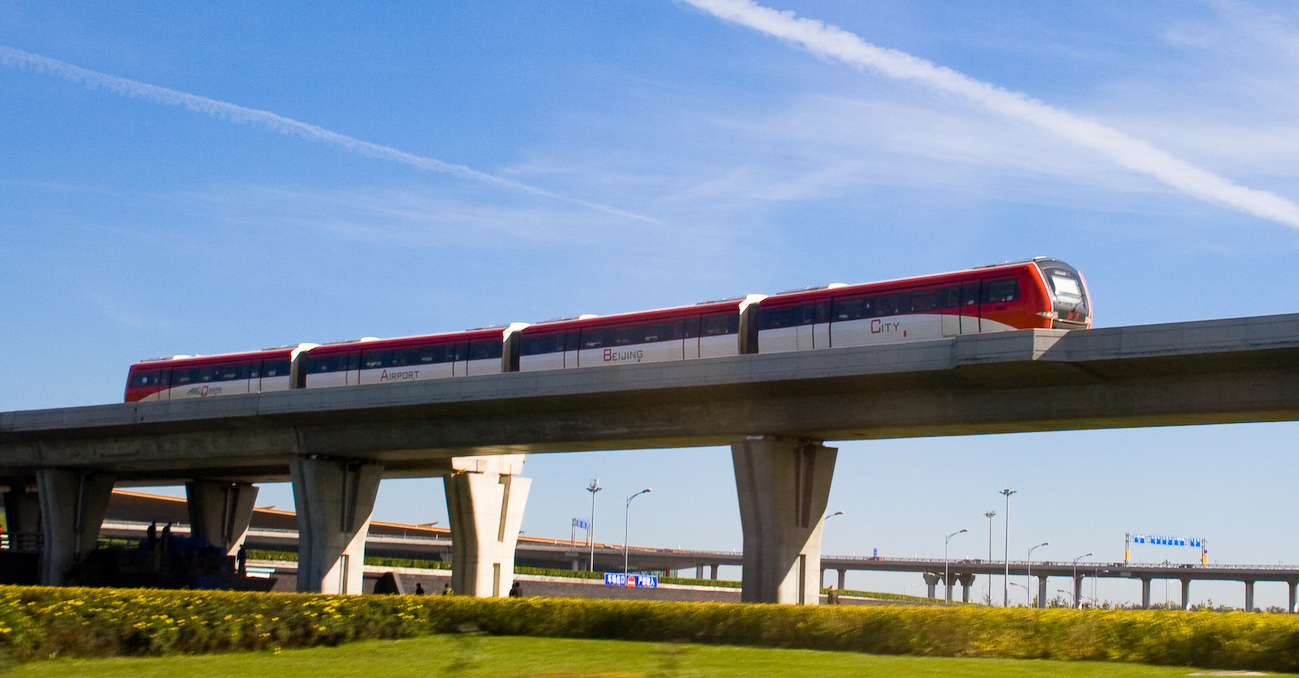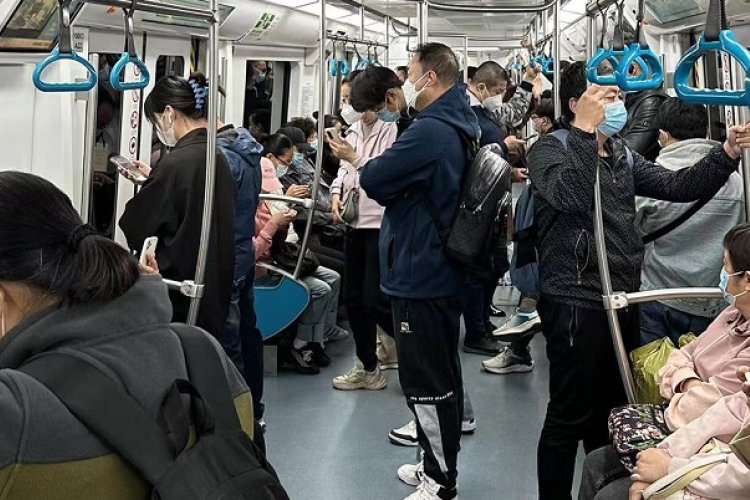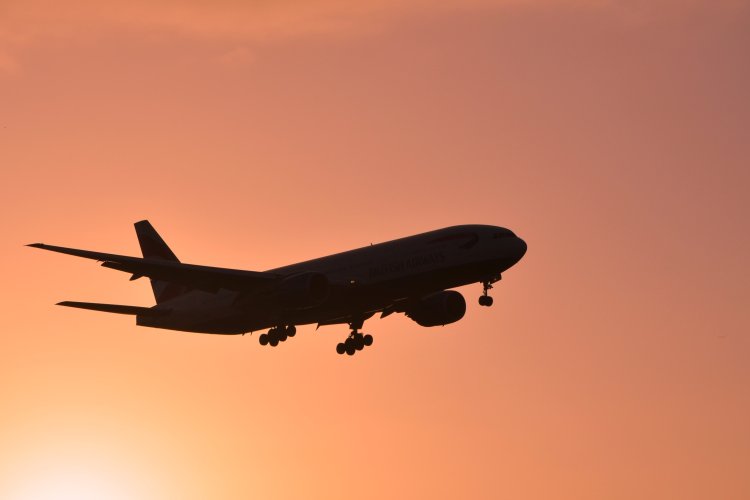Talking Travel: China Imposes a New Slate of Travel Bans, Beijingers Horse Around, and Airport Express Gets a Makeover
Talking Travel: Your semi-regular roundup of Beijing's latest transportation-related news.
China imposes new travel bans on growing list of countries
On Nov 4, Chinese embassies in the UK, Belgium, and the Philipines issued a new travel restriction stating that residents of those countries will be temporarily banned from entering China and that their embassies will not be granting any Statement of Health paperwork. By Nov 5, that list had grown to include India, Ukraine, Bangladesh, France, Russia, Italy, and Ethiopia. According to the embassies, the new travel restrictions are down to either worsening pandemic conditions – as is the case in the UK, Belgium, and India – or being the source of imported cases to China, i.e. Ukraine and Bangladesh. This is on top of the news we reported last week about additional antibody test requirements before boarding a flight to the mainland. As such, the situation will continue to be evaluated.
It was noted that the policy will not affect people holding diplomatic, service, courtesy, or C visas. Likewise, individuals who need to visit China on an emergency humanitarian basis can apply for a temporary visa at their local embassy, however, the visa will only be valid if it was issued after Nov 3.
Beijing's Airport Express undergoes a major renovation
Since the 2008 Games, the Beijing Capital International Airport subway line – Airport Express – has been carting passengers to and from the city center. Now, 12 years later, it's ready for an upgrade. Despite Daxing International Airport drawing a considerable amount of attention and passenger flow since it was put into use last year, Beijing Capital International Airport still shoulders much of the responsibility for connecting China's capital with the rest of the world.

Currently, the airport service starts at Dongzhimen Station and connects to Sanyuanqiao Station where passengers pick up the Capital Airport Express train. Once the renovation is completed, however, the subway service will start at Beixinqiao Station on Line 5, while Dongzhimen station will take up the admirable task of offering a pre-airport luggage check-in service. Meanwhile, the renovated stations will be equipped with more female restrooms and baby care facilities, as well as redesigned handicap toilets which will be expanded to provide more space for wheelchair users and feature newly installed call-for-help buttons in case of an emergency.
And it's not just bathrooms that are getting a makeover either. The interior design and uniforms of subway personnel will also be getting rebranded, offering a fresh new look for visitors as they arrive in Beijing. All told, the renovations should be completed by the end of next year, one year behind their initial pre-COVID schedule.
Government building up new transportation hubs across the city

An efficient and well-organized transportation system is crucial for a city as vast as Beijing, and as the capital continues to grow in both scope and population, a few more transportation hubs would doubtlessly help shoulder the traffic burden while providing diverse choices for people to get around the city.
That's why, according to the municipal government, four new hubs are currently under construction and will play various roles in Beijing’s transportation network. For example, the hub located by the Dongxiayuan subway station on Line 6 will be the transit center for passengers commuting between downtown and Tongzhou, Beijing's suburban center, while the one at Wangjing will integrate multiple means of transportation, including subway line 13, 15, 17, buses, taxis, and long-distance coaches that travel beyond the city limits.
So far Beijing has already constructed and put 12 transportation hubs into use, with eight of them operating the majority of trips within the city while the other four function as junctions connecting the capital with nearby regions.
Bring the carriage back! China gets its first dedicated horse lane

While other parts of the city are busy ramping up autonomous taxi services and laying the ground for driverless vehicles, one area in the capital is harkening back to a simpler mode of transportation. Last week, the first dedicated urban horse trail opened for equestrian buffs in Beijing. Located in Cuigezhuang and spanning a total of 4.37 km, this riding route leads travelers through the stunning views of Northeast Beijing, and past various points of interest such as The Red-Brick Art Gallery, Helixi Wetland Park, multiple vineyards, and more.
It will not only serve as a professional venue for equestrian events but will also offer services such as recreational horse riding and carriage rides.
Cuigezhuang has a long history of horsing around since the nearby area served as a horse ranch during the Yuan Dynasty and many neighborhoods were named for horse-related activities. Likewise, Beijing’s earliest professional horse racing track was also built in the area.
Read: A Tale of Two Airports: Beijing Capital Airport and Daxing by the Numbers
Images: Wikipedia, China.com, Qianlong, Xinhua
Related stories :
Comments
New comments are displayed first.Comments
![]() Sikaote
Submitted by Guest on Sun, 11/08/2020 - 15:10 Permalink
Sikaote
Submitted by Guest on Sun, 11/08/2020 - 15:10 Permalink
Re: Talking Travel: China Imposes a New Slate of Travel Bans,...
OK, I'll bite. What is the yawning semantic gap between "pick up" and "connect"? When I read the piece, I understood that one can board the airport express using one of the stations on line 10. (After a bit of a subterranean hike.) I have, in fact, done so a number of times. Subway personnel did not seem to give a flying fornication whether I was picking up, connecting, or simply boarding.
I don't have an issue with the word "pick up" although it is a bit unusual. The article states: "Line 10's airport service starts at Dongzhimen Station and connects to Sanyuanqiao Station where passengers pick up the Capital Airport Express train."
This is incorrect because 1. Line 10 does not have airport service; 2. Line 10 does not go to Dongzhimen; 3. Passengers who take the Capital Airport Express from Dongzhimen toward the airport do not switch trains at Sanyuanqiao (or in the other direction).
There is a station on Line 10 (Sanyuanqiao) where you can get on the Capital Airport Express, as you mentioned. The Capital Airport Express and Line 10 are separate subway lines. The information in the article is not related to Line 10. You can look at a subway map for more information about the Beijing Subway lines if it's not clear.
'Pick up' is millenial-speak for 'catch'.

![]() xz576
Submitted by Guest on Sat, 11/07/2020 - 20:14 Permalink
xz576
Submitted by Guest on Sat, 11/07/2020 - 20:14 Permalink
Re: Talking Travel: China Imposes a New Slate of Travel Bans,...
OK, I'll bite. What is the yawning semantic gap between "pick up" and "connect"? When I read the piece, I understood that one can board the airport express using one of the stations on line 10. (After a bit of a subterranean hike.) I have, in fact, done so a number of times. Subway personnel did not seem to give a flying fornication whether I was picking up, connecting, or simply boarding.
I don't have an issue with the word "pick up" although it is a bit unusual. The article states: "Line 10's airport service starts at Dongzhimen Station and connects to Sanyuanqiao Station where passengers pick up the Capital Airport Express train."
This is incorrect because 1. Line 10 does not have airport service; 2. Line 10 does not go to Dongzhimen; 3. Passengers who take the Capital Airport Express from Dongzhimen toward the airport do not switch trains at Sanyuanqiao (or in the other direction).
There is a station on Line 10 (Sanyuanqiao) where you can get on the Capital Airport Express, as you mentioned. The Capital Airport Express and Line 10 are separate subway lines. The information in the article is not related to Line 10. You can look at a subway map for more information about the Beijing Subway lines if it's not clear.
![]() China Boy
Submitted by Guest on Fri, 11/06/2020 - 20:59 Permalink
China Boy
Submitted by Guest on Fri, 11/06/2020 - 20:59 Permalink
Re: Talking Travel: China Imposes a New Slate of Travel Bans,...
I’d have used slew rather than slate but then I’m British. Having said that the inclusion of the UK in the list is such an embarresment and a reflection of the buffoons we elected to parliament. Here in GuangZhou I’m getting strange looks if I speak English. I hope the situation improves.
![]() xz576
Submitted by Guest on Fri, 11/06/2020 - 18:43 Permalink
xz576
Submitted by Guest on Fri, 11/06/2020 - 18:43 Permalink
Re: Talking Travel: China Imposes a New Slate of Travel Bans,...
I said I wouldn't work for free anymore, but... The subway line that goes to the airport is not Line 10. There is no "line 10 airport service" and customers do not "pick up the Capital Airport Express train" at Sanyuanqiao. The Capital Airport Express is a separate line with stops at Dongzhimen, Sanyuanqiao, and the Capital Airport.
The Chinese source linked in the section isn't related to the Capital Airport Express line. However, the other information is correct (there is an extension to Beixinqiao planned to open next year, and they are renovating the bathrooms, etc.)
It is interesting that the author is so unfamiliar with the Beijing Subway.
![]() Sikaote
Submitted by Guest on Fri, 11/06/2020 - 18:10 Permalink
Sikaote
Submitted by Guest on Fri, 11/06/2020 - 18:10 Permalink
Re: Talking Travel: China Imposes a New Slate of Travel Bans,...
Last week, the first dedicated urban horse trail opened for equestrian buffs in Beijing.
Are there dedicated BBQ grills located there?? Asking for a friend.

Validate your mobile phone number to post comments.







